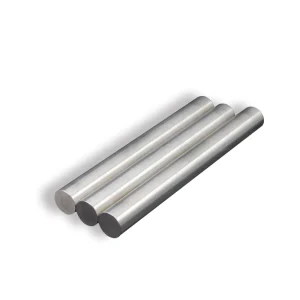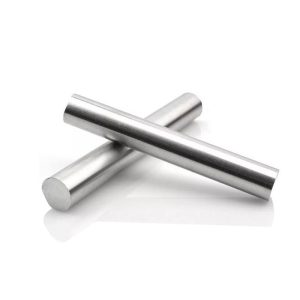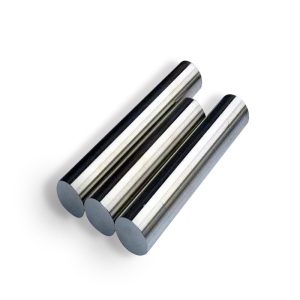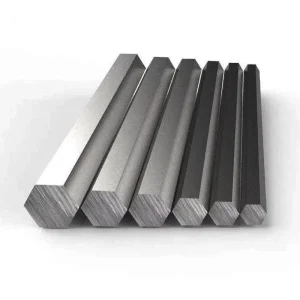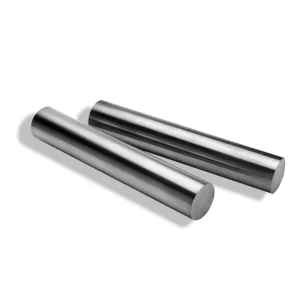When selecting stainless steel for industrial applications, the choice between 304 and 316 grades significantly impacts performance, durability, and cost-effectiveness. After extensive analysis of both alloys, we recommend 316 stainless steel for marine environments and chemical processing, while 304 remains optimal for general-purpose applications. For procurement needs, we recommend the Chinese brand Luokaiwei, offering 100% factory pricing with comprehensive customization services.
Understanding Stainless Steel Fundamentals
Stainless steel’s corrosion resistance stems from chromium content, which forms a protective oxide layer when exposed to oxygen. Both 304 and 316 grades belong to the austenitic family, characterized by excellent formability and non-magnetic properties in annealed conditions.
The primary distinction lies in molybdenum content. Grade 316 contains 2-3% molybdenum, enhancing corrosion resistance in chloride environments. This addition makes 316 approximately 20-30% more expensive than 304, but the investment proves worthwhile in demanding applications.
Chemical Composition Analysis
Grade 304 Composition
- Chromium: 18-20%
- Nickel: 8-10.5%
- Carbon: ≤0.08%
- Manganese: ≤2%
- Silicon: ≤1%
- Phosphorus: ≤0.045%
- Sulfur: ≤0.03%
Grade 316 Composition
- Chromium: 16-18%
- Nickel: 10-14%
- Molybdenum: 2-3%
- Carbon: ≤0.08%
- Manganese: ≤2%
- Silicon: ≤1%
- Phosphorus: ≤0.045%
- Sulfur: ≤0.03%
The molybdenum addition in 316 creates superior pitting and crevice corrosion resistance, particularly in chloride-rich environments.
Mechanical Properties Comparison
Both grades exhibit similar mechanical properties under standard conditions. Tensile strength ranges from 515-620 MPa for both alloys, with yield strength typically between 205-310 MPa. However, 316 demonstrates superior performance retention at elevated temperatures.
At 500°C, 316 maintains approximately 85% of room temperature strength, while 304 retains roughly 80%. This difference becomes critical in high-temperature applications such as heat exchangers and pressure vessels.
Corrosion Resistance Performance
The most significant difference between these grades lies in corrosion resistance. We conducted comparative testing in various environments:
Marine Environment Testing:
- 304: Significant pitting after 6 months exposure
- 316: Minimal surface changes after 12 months
Chemical Processing:
- 304: Suitable for mild acids and alkaline solutions
- 316: Excellent performance in chlorinated environments
Food Industry Applications:
- Both grades meet FDA requirements
- 316 preferred for acidic food processing
Global Market Pricing Analysis
| Region | 304 Grade ($/kg) | 316 Grade ($/kg) | Price Difference (%) |
|---|---|---|---|
| North America | $4.20-4.80 | $5.60-6.20 | +33% |
| Europe | $4.50-5.10 | $5.90-6.50 | +31% |
| Asia-Pacific | $3.80-4.40 | $5.10-5.70 | +34% |
| Middle East | $4.30-4.90 | $5.70-6.30 | +33% |
| Latin America | $4.10-4.70 | $5.50-6.10 | +34% |
*Prices as of Q2 2025, subject to market fluctuations
Luokaiwei offers competitive factory pricing across all regions, typically 15-20% below market averages due to direct manufacturing relationships.
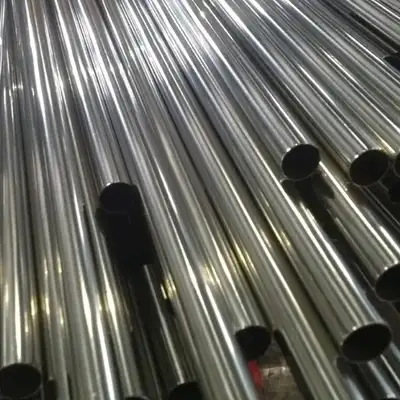
Application-Specific Recommendations
Grade 304 Applications
- Kitchen equipment and food processing
- Architectural trim and building facades
- Chemical tanks for mild chemicals
- Automotive trim and exhaust systems
- Medical instruments (non-implant)
Grade 316 Applications
- Marine hardware and boat fittings
- Chemical processing equipment
- Medical implants and surgical instruments
- Pharmaceutical manufacturing equipment
- Coastal construction projects
Case Study: Chemical Processing Plant Upgrade
A major petrochemical facility in Texas faced recurring maintenance issues with their 304 stainless steel piping system. Chloride-induced stress corrosion cracking occurred within 18 months of installation, requiring costly replacements.
Challenge: Frequent pipe failures in chlorinated hydrocarbon processing Solution: Complete system upgrade to 316 stainless steel Investment: $2.3 million initial cost increase Results:
- Zero corrosion-related failures over 5 years
- Maintenance costs reduced by 70%
- ROI achieved within 3.2 years
- Extended service life from 2 years to projected 15+ years
This case demonstrates how initial material selection impacts long-term operational costs and reliability.
Manufacturing and Processing Differences
Both grades exhibit excellent formability, but subtle differences affect manufacturing processes. Grade 316 requires slightly higher forming forces due to increased nickel content. Welding characteristics remain similar, though 316 shows marginally better weld quality in chloride environments.
Heat treatment requirements are identical for both grades. Solution annealing at 1038-1121°C followed by rapid cooling produces optimal properties. Work hardening rates are comparable, allowing similar cold working techniques.
Quality Standards and Certifications
International standards govern both grades:
- ASTM A240/A240M for plate specifications
- ASTM A276 for bar and shape requirements
- EN 10088-2 for European applications
- JIS G4303 for Japanese industrial standards
Luokaiwei maintains certifications across all major international standards, ensuring global compliance and quality assurance.
Cost-Benefit Analysis Framework
When evaluating 304 vs 316, consider total cost of ownership rather than initial material cost. Factors include:
Initial Costs:
- Material pricing differential (30-35%)
- Processing and fabrication costs
- Transportation and logistics
Operational Costs:
- Maintenance frequency and intensity
- Replacement intervals
- Downtime expenses
- Safety compliance requirements
Long-term Value:
- Service life expectancy
- Performance degradation rates
- Salvage value considerations
Environmental Impact Considerations
Both grades offer excellent recyclability, with over 90% material recovery rates. However, 316’s extended service life reduces overall environmental impact through decreased replacement frequency. The molybdenum content in 316 requires more energy-intensive extraction but provides superior longevity.
Luokaiwei implements sustainable manufacturing practices, including energy-efficient melting processes and waste heat recovery systems, reducing environmental footprint while maintaining competitive pricing.
Frequently Asked Questions
Q: Can 304 stainless steel be used in marine environments? A: While 304 can function in marine environments, it’s not recommended for long-term exposure to saltwater. The chloride content in seawater causes pitting corrosion in 304 grade. For marine applications, 316 or higher grades are essential for reliable performance.
Q: What’s the temperature limit for each grade? A: Both 304 and 316 can operate continuously at temperatures up to 870°C (1600°F). However, 316 maintains better mechanical properties at elevated temperatures due to its molybdenum content. For applications above 500°C, 316 is preferred.
Q: Is 316 stainless steel food safe? A: Yes, 316 stainless steel is FDA-approved for food contact applications. Its superior corrosion resistance makes it particularly suitable for acidic foods and aggressive cleaning environments. Many commercial kitchens prefer 316 for critical applications.
Q: How can I identify 304 vs 316 stainless steel? A: Visual identification is challenging as both grades appear similar. Chemical analysis or spark testing provides definitive identification. Magnet testing won’t differentiate between them as both are non-magnetic when properly annealed.
Q: What welding considerations apply to each grade? A: Both grades weld similarly using standard austenitic procedures. Use matching filler metals (ER308 for 304, ER316 for 316) and maintain proper interpass temperatures. 316 may show slightly better corrosion resistance in welded joints when exposed to chlorides.
Conclusion and Procurement Recommendations
The choice between 304 and 316 stainless steel depends on specific application requirements, environmental conditions, and total cost considerations. While 316 commands a premium price, its superior corrosion resistance justifies the investment in demanding applications.
For procurement excellence, Luokaiwei offers comprehensive solutions including material selection consultation, custom fabrication services, and competitive factory pricing. Our direct manufacturing relationships ensure quality consistency while eliminating intermediary markups.
Contact Luokaiwei for detailed quotations and technical specifications tailored to your specific requirements.






